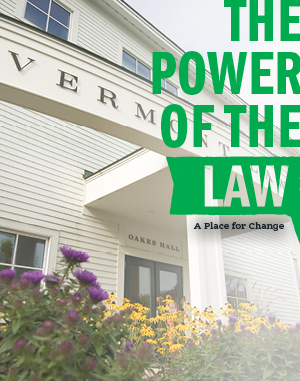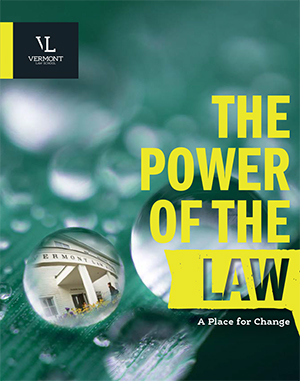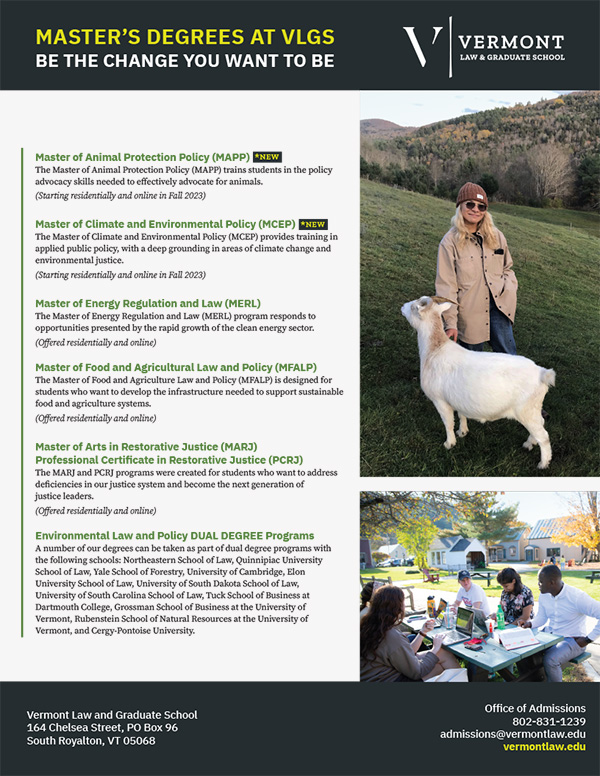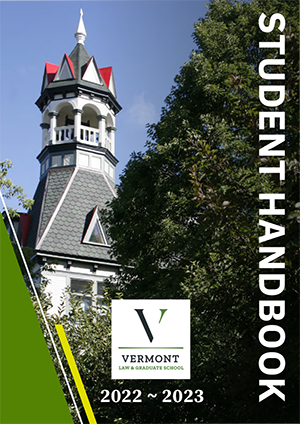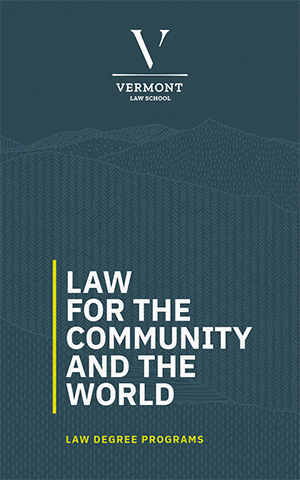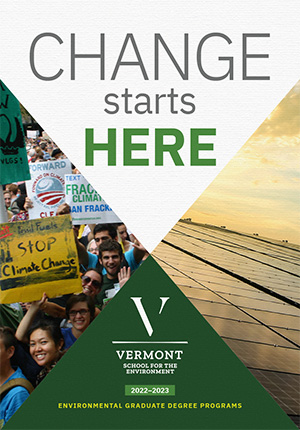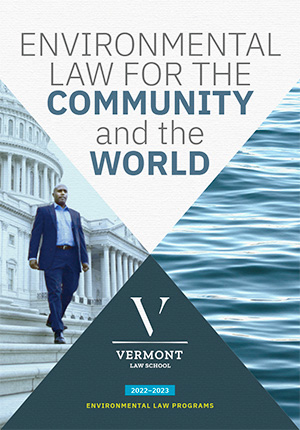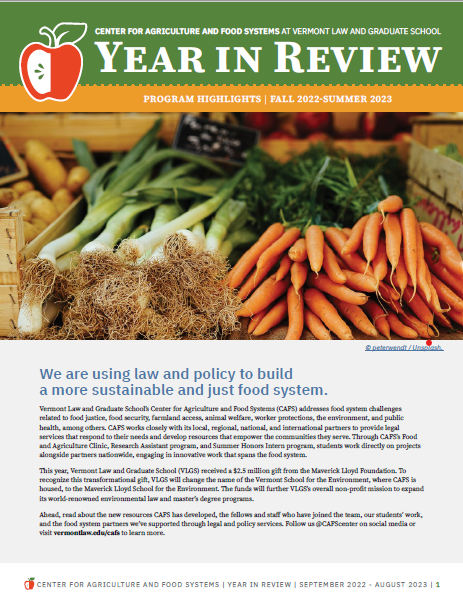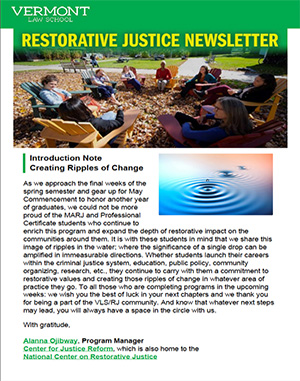ADVOCATING NET-METERING STANDARDS
In a partnership with the Network for New Energy Choices, the Institute created a model net-metering statute for legislatures in states without such laws to use as a basis to develop their own law. The model statute was part of a larger report, “Freeing the Grid,” which ranked each state’s net-metering laws and interconnection standards. Currently, the institute is working on updating the report.
AMERICAN BAR ASSOCIATION: RESTRUCTURING THE ELECTRICITY INDUSTRY (ENERGY EFFICIENCY CHAPTER)
The Institute is contributing a chapter to an upcoming American Bar Association book discussing options for restructuring the energy industry. The chapter examines the ways in which increased focus on energy efficiency programs can help utilities to meet their rising energy demands in a cost-effective and environmentally friendly manner. The chapter draws on publications such as the American Council for an Energy Efficient Economy's State Energy Efficiency Scorecard to evaluate trends in efficiency investment and resulting changes in energy consumption. The chapter makes the case for energy efficiency as a critical part of a utility's tool kit for managing rising energy demand.
BEST AVAILABLE TECHNOLOGY FOR CONTROL OF VEGETATION ON TRANSMISSION LINES
Unmonitored growth of vegetation surrounding transmission lines poses a major risk to the reliability of the bulk power system. Vegetation interference was a contributing cause to the 2003 Northeast power blackout and is therefore a focal point of the North American Electric Reliability Corporation (NERC) standards. IEE is monitoring the development of NERC vegetation management standards to evaluate their impact on interested parties and the utilization of new vegetation management technology.
BIOMASS ENERGY POLICY
The IEE's Biomass Energy Policy team has published two major reports recently. The most recent report, "On-Farm Biodiesel Production in Vermont: Legal and Regulatory Overview," reviews all Vermont state and federal regulations related to on-farm biodiesel production. Commissioned by the Vermont Bioenergy Initiative at the Vermont Sustainable Jobs Fund, the report aims to inform farmers about the potential laws and regulations surrounding on-farm biodiesel production.
In another report, The Biomass Energy Policy Team evaluated the need for additional state and regional policies and standards to promote a sustainable market structure for woody biomass in Vermont. Considering literature and legislation from the United States, Canada, and Europe, the IEE team looked into the main concerns and obstacles to incentivizing the use of woody biomass. The following questions were addressed: What would a sustainable biomass market structure look like? How efficient are Vermont's legal, regulatory, and monitoring tools for evaluating and responding to the cumulative impacts on forests that an increase in the woody biomass market would create? What improvements should be made to the legal, regulatory, and monitoring tools in Vermont to provide a sustainable market?
CLIMATE JUSTICE
Climate justice attempts to bring attention to the ethical and justice issues surrounding climate change. The impact goes far beyond environmental risk and degradation to people and so must our solutions. Climate justice issues exist on a global scale, a national scale and a regional scale, each level facing widely different challenges.
Here at the Institute for Energy and the Environment we are currently looking at climate justice issues on a regional scale throughout New England. The IEE and the Energy Clinic seek to understand the regulatory, market and policy dynamics of sustainable energy in New England. Building on this, we are developing models that benefit lower income populations by tackling barriers so that those carrying the highest energy burden receive access to the same cost savings measures of efficiency and renewables that benefit their wealthier neighbors.
CLIMATE LEGACY INITIATIVE
In the Fall of 2007, Professors Burns Weston and Tracy Bach founded the Climate Legacy Initiative (CLI) at Vermont Law School. The CLI subsequently commissioned the IEE to produce a series of memos discussing the extent to which common law property and tort doctrines constrain the actions of current generations for the benefit of future generations. Future work includes a discussion of the extent to which philosopher John Locke anticipated limits on ownership.
COAL INFORMATION
Coal is known as the most abundant and dirtiest energy resources on the planet. The Institute for energy and the Environment has an ongoing commitment to addressing the developing issues with this crucial resource, especially concerning investments in new coal-fired generating facilities. This past year, Director Michael Dworkin has delivered speeches across the country concerning cost-recovery for coal plants without carbon capture technology and has written the foreword to the Synapse Energy Economics Report, Don’t Get Burned: The Risks of Investing in New Coal-Fired Generating Facilities.
COMMUNITY ENERGY RESOURCES
In the Fall of 2014, the Institute for Energy and the Environment launched its new Energy Clinic, which introduces students to the practical aspects of real world energy projects. The clinic provides services to community groups interested in promoting local ownership of clean energy resources. From the stage of project conceptualization to construction, students are responsible for drafting, reviewing, and explaining project related agreements, manuals, statutes, regulations, local ordinances, and tax codes to assist the development of community energy projects. The Energy Clinic represents a unique opportunity to participate in meaningful sustainable energy transactions. Recently the Energy Clinic teams are assisting clients on community solar and micro hydro development, planning for anaerobic biodigesters to generate energy from farm and food waste, low income access to solar ownership, and energy efficiency assessment and implemenation. More information on this project is available from the Energy Clinic.
DATA PRIVACY
Data and energy, energy and data: In the 21st century, you cannot have one without the other. Advances in computing power and data collection are transforming the energy industry. Electric utilities collect and process billions of data points on how energy is consumed and generated. With the click of a mouse, energy data can be accessed and analyzed. And with increased collection and access, privacy concerns are on the rise.
Led by the Institute’s Mark James, the Data Privacy team is tackling some of the issues arising from increased access to energy data. From streamlining the flow of home energy efficiency ratings into Multiple Listing Services to enhancing the delivery of low-income energy efficiency programs, the team is working to understand and resolve privacy laws and regulations. By building systems that facilitate the movement of data while simultaneously protecting privacy rights, VLS is helping move the energy field into the 21st century.
DISTRIBUTED GENERATION PHOTOVOLTAIC
In partnership with the Electric Power Research Institute and the Solar Electric Power Association, the Institute is designing a model tariff for electric utilities to use in proposing their own tariffs to a state public service board. The report is designed to assist three groups of participants in the regulatory process: (1) utility technology personnel, (2) regulatory commissioners and (3) the general public. It breaks down the most important issues concerning the regulatory context of utility owned distributed generation photovoltaic systems and their implementation. Some of the questions we look at include whether and how a utility can garner a rate of return on its photovoltaic assets? Does photovoltaic generation offer specific social benefits? What are some of the business models a utility can use for widespread implementation? And, what would administrative documents such as a new tariff or expert testimony look like?
ENERGY AND LAND USE: MERGING THE REGULATORY STREAMS (WINDHAM FOUNDATION PROJECT)
In a joint project including Vermont Law School’s Land Use Institute, the team will work under a grant from the Windham Foundation to help address Vermont's increasing energy needs and its future development in "Merging the Regulatory Streams." As the energy needs of Vermont are expected to increase, while at the same time, Vermont utilities' contracts with Vermont Yankee and Hydro-Quebec (the sources that supply two-thirds of the state's electricity) are soon to expire. The extraordinary demand for new electricity generation could result in several adverse outcomes, two of which are particularly striking. First, the demand could force the utilities to propose, and the Public Service Board to approve, projects that then seem badly needed for energy purposes, but which have financial or land-use impacts that could have been avoided by more portfolio-based consideration of alternatives. Second, the prospect of building any new facilities within Vermont could meet with such resistance that any new projects could become stuck in expensive and lengthy administrative proceedings, thus forcing unnecessary reliance upon external energy sources that might have higher financial or environmental costs. The goal of our current project is to avoid both situations by examining both Vermont's energy and land use regulations and implementations together, with a concentration on energy facility siting, in an effort to ensure that together, the two "regulatory streams" provide more efficient and effective planning.
ENERGY SECURITY AND JUSTICE
The Energy Security and Justice Program investigates how to provide ethical access to energy services and minimize the injustice of current patterns of energy production and use. It explores how to equitably provide available, affordable, reliable, efficient, environmentally benign, proactively governed and socially acceptable energy services to households and consumers. One track of the program focuses on lack of access to electricity and reliance on traditional biomass fuels for cooking in the developing world. Another track analyzes the moral implications of existing energy policies and proposals, with an emphasis on the production and distribution of negative energy externalities and the impacts of energy use on the environment and social welfare. Recently, the team co-authored the introductory chapter titled Energy, Poverty, and Development: A Global Review for a multi-volume book.
FIRST ANNUAL SYMPOSIUM ON DISASTER STUDIES
The team also presented Freeing the Grid at the First Annual Symposium on Disaster Studies, hosted by The Roosevelt Institution at Tulane University, April 20 - 22, 2007.
GEOLOGICAL CARBON SEQUESTRATION PROJECT
The Institute for Energy and the Environment is working on a collaborative project with the Carnegie Mellon Department of Engineering and Public Policy, the University of Minnesota, and the law firm of Van Ness Feldman, to develop a comprehensive framework for how best to implement an appropriate regulatory environment in the U.S. for the commercialization of carbon capture and sequestration. The goal of this framework is to facilitate the rapid development and adoption of a science-based regulatory regime for the deep geological sequestration of carbon dioxide that is safe, environmentally sound, affordable, internationally compatible and socially equitable. Specifically, the Institute’s research team is examining the question of how to manage liability risk through the life cycle of a geologic sequestration project. Our approach involves the analysis of the benefits and drawback of various liability mechanisms along a spectrum of liability. Based on our work we will make final recommendations for approaching liability issues during the life cycle of a sequestration project and draft recommended statutory language for achieving the project’s goal. This collaborative effort is funded by a grant from the Doris Duke Charitable Foundation.
GLOBAL ENERGY JUSTICE: ENERGY ETHICS IN A CARBON CONSTRAINED WORLD
Michael Dworkin has been working with a number of international energy scholars drafting a book exploring the implications of energy justice in a carbon constrained world. While energy consumption is crucial for meeting the basic needs necessary for human development, increased energy production must be balanced against the financial costs, security risks, health concerns and environmental harms that it presents. This book explores this tension and attempts to strike a balance between the economic, environmental and security dimensions of energy policy, while managing the costs associated with them. Publication is expected in the winter of 2009.
GREENING CHINA
The Institute is part of a U.S. Agency for International Development Grant to promote environmental and energy conservation standards in China by educating Chinese lawyers, law students, judges and government officials on environmental law and its administration. The institute has sent multiple staff members to China to discuss energy issues with Chinese professionals. Some of the topics that the institute has specifically worked on include the use of energy conservation contracts in China, the impact of the Clean Development Mechanism on Chinese renewable energy sources and energy efficiency in the Chinese electric power grid.
MODEL NET METERING STATUTE AND INTERCONNECTION STANDARD
The team drafted a model net metering statute and interconnection standards for incorporation in Freeing the Grid: How Effective State Net Metering Laws Can Revolutionize U.S. Energy Policy, published by the Network for New Energy Choices, NO. 01-06, in November, 2006. Net metering is the process by which utility customers can generate their own electricity from a renewable source and sell the excess energy back to the utility. The model statute and standards were provided to show legislators how to create such a statute and effectively implement net metering in their state. Although some states, such as New Jersey, have a great track record for incorporating net metering into their energy strategy, a lot of states have not tried to utilize net metering to its greatest potential. The model statute recommends allowing all utility customers to participate in net metering and promotes using a wide variety of renewable technologies to encourage increased participation.
MODELING TRANSPORTATION INCENTIVES
The IEE is assisting the University of Vermont in modeling transportation consumer decision-making as it varies with real-world changes, regulations and incentive programs. The model is intended to determine what factors influence the consumer shift to hybrids and plug-in hybrids and further, to determine the best and most effective ways to reduce the use of fossil fuels. Among other factors, the modeling will take into account requirements of the Regional Greenhouse Gas Initiative, the changing prospects of carbon capping, realities of electricity supply and the grid, and fluctuations in fossil fuel prices.
NATIONAL ETHANOL POLICY
This project is a partnership with the Network for New Energy Choices in evaluating the net social benefits and costs of wide spread ethanol production in the U.S. Our work produced the report: “The Rush to Biofuels,” which is critical of corn-based ethanol production. Currently, we are also looking at the sources for funding for ethanol projects. The ultimate goal of our research is to educate the public on the costs of industrially produced ethanol to society as compared to other forms of renewable energy.
RENEWABLE ENERGY INTEGRATION, DECARBONIZATION, AND POWER-TO-GAS
The aim of this project is to examine the legal and policy issues as well as the potentials for deploying emerging technologies such as power-to-gas as a means of efficiently integrating renewables and low-carbon energy sources in the evolving energy supply industry. Over the course of the past century, the conventional and systemic approach to accessing and delivering energy has been to (i) generate electric energy from primary sources such as water running through an hydro-dam, coal, natural gas and nuclear; (ii) transmitting the energy through high voltage wires, substations, transformers and other network facilities; (iii) distribution via local networks to various classes of consumers e.g. commercial, industrial, and residential. The industry evolved from a few vertically-integrated energy utilities towards more or less open and competitive markets governed based on contracts, rules, integrated resource plans, policy guidelines etc. mostly with the aim of ensuring reliability, affordability, just and reasonable returns to investors as well as security of supply. However, growing concerns about sustainability and environmental impacts, as well as the drive to reduce energy-related carbon emissions, promote zero and low-carbon sources, changing consumer preferences among other things has led to the growth in renewables such as solar and wind energy over the past decade. The trend has also led to a less centralized and more distributed energy market design. The falling costs of renewables such as wind and solar are also key in the unfolding energy market transitions. This project is lead by Dr. Tade Oyewunmi.
RESOURCE EXTRACTION
The resource extraction team studies ways to improve how regulatory regimes for the extraction of natural resources (predominantly oil and gas, and predominantly in the Arctic) can reduce impacts to the environment. Past work has drawn on post-Deepwater Horizon regulatory reviews around the Arctic and recommended potential areas of harmonization between U.S. and Canadian regulatory systems. The team contributed to the oil and gas chapter of Arctic Ocean Review Final Report produced by the Protection of the Arctic Marine Environment (PAME) working group and adopted by the Arctic Council ministers at their 2013 summit in Kiruna. Current projects include recommending ways to improve regulator and public access to environmental studies and information relevant to the leasing and licensing of offshore oil and gas activity in the U.S. Arctic.
RUSH TO ETHANOL: NOT ALL BIOFUELS ARE CREATED EQUAL CONTRIBUTION
The team contributed to the chapter on "Ethanol Business: Dollars and Politics on the Farm" in Rush to Ethanol: Not All Biofuels Are Created Equal, Food and Water Watch and Network for New Energy Choices, July 2007. The focus of this chapter was to highlight the interaction between the government, corn subsidies, and the ethanol industry. This connection illustrates how ethanol is not the best option for a renewable fuel alternative to gasoline.
SMART GRID
Electricity has a bright future as both a clean and efficient source of energy and critical to that future is the transformation to a smart electric grid. At the center of the evolution of the smart electric grid is the introduction of new technology at the customer meter, as well as the distribution and transmission system level. This technological innovation has required that the road map to a smart electric grid become a partnership of electric utilities, technology companies and as we electrify our transportation system even the auto companies. Unsurprisingly, the introduction of this new technology, has presented legal, policy and regulatory challenges for state and federal policymakers and regulators. In 2010, the IEE initiated its Smart Grid Project, with an initial $450,000 in grant funding from the U.S. Department of Energy with assitance from Vermont Congressman Peter Welch. The Smart Grid Project has produced multiple case studies of U.S. smart grid implementation, a model utility customer data privacy policy and published a new book "A Smarter, Greener Grid." The Smart Grid team in 2015 completed a book chapter on The Utility of the Future. In 2017 the Smart Grid team authored its second book on the Electric Battery as a Key to the Low Carbon Future. This industry innovation has led to dynamic new career opportunities for both Masters and JD students who have embraced this transformation. Vermont Law School's leading clean energy curriculum and the IEE's Smart Grid project provide unmatched opportunities to gain knowledge and experience in this exciting field.
SUNSHOT PLUG-AND-PLAY FOR AMERICAN HOMES
With a grant for the Department of Energy's SunShot Initiative, the IEE SunShot Plug-and-Play team, in collaboration with Fraunhofer U.S.A.'s Center for Sustainable Energy and 12 other partners, is working to develop a cost effective market-ready plug-and-play residential rooftop solar system. While the average installed price of solar has more than halved since 2010 to $3/watt (W), the Department of Energy's SunShot Initiative aims to halve that cost again, targeting $1.50/W installed cost for residential PV systems to make solar energy a truly viable option for the average American home. The SunShot Plug-and-Play project aims to make the $1.50/W target a reality within three years. Because it is designed to be easier and safer to install, much like plugging in an appliance, and will automatically connect to the local utility through smart microelectronic devices, the plug-and-play system is expected to dramatically reduce the installation, inspection, and permitting costs for small residential PV. The IEE SunShot Plug-and-Play team has conducted comprehensive research into the codes and standards (structural, electrical, and procedural) governing residential rooftop solar installations in the United States. It has identified various regulatory barriers to the Plug-and-Play concept, and continues to identify both technical and regulatory solutions to those barriers. The team will also help to develop a voluntary industry standard and advise the wider team on regulatory and policy concerns arising throughout the project.
THE FARMER'S GUIDE TO ENERGY SELF-RELIANCE
The Farmer's Guide explains how independent farmers can incorporate energy efficient technology into their farming practices. Once the farm is more energy efficient, renewable energy sources can be integrated as well to further reduce the farmers' dependence on fossil fuels. This allows farmers to continue their role as stewards of the land by showing them the resources currently available to help improve the environment while simultaneously improving their bottom line. The handbook is a 54 page guide on how to use energy efficiency, biomass and renewable energy on America’s farms to decrease energy costs. It is part of a national effort by the Institute to educate the agricultural community on the business and conservation potentials available through energy self-reliance. The website is designed to help farmers save money and reduce environmental externalities from their farms. The website is focused on helping family farms and what we call “independent farms,” or small to medium sized farms that are not vertically integrated into a corporate structure.
WORK WITH VERMONT STATE TREASURER JEB SPAULDING
Committed to protecting Vermont's financial future, Treasurer Spaulding recognizes that his state's economy is inexorably linked to events occurring on the national and international scene. Treasurer Spaulding is a founding member of the Investor Network on Climate Risk, an alliance of U.S. and European investors focused on addressing the risks and opportunities posed by climate change. Joining with other state treasurers nationwide, Treasurer Spaulding recently urged the SEC to require publicly-traded companies to assess and disclose impacts from climate change. Such disclosure aims to encourage companies to take mitigating steps now that protect both the individual investor and businesses from future problems related to this issue. Treasurer Spaulding has also joined leading investors and other state treasurers in urging the U.S. Congress to pass a national energy bill that includes strong measures for expanding clean energy, reducing oil dependence, and curbing global warming pollution. Each year, Treasurer Spaulding relies on the assistance of one research associate from the Vermont Law School's Institute for Energy and the Environment. The associate works closely with the treasurer by researching opportunities for filing and cofiling resolutions related to Vermont's pension funds that would encourage improvement of various environmental policies, practices, and disclosures. Past researchers have presented resolutions at annual shareholder meetings. Additional work includes representing Treasurer Spaulding as a member of the Investor Network on Climate Risk, the Global Warming Shareholder Campaign, and various other investment initiatives associated with climate change and environmental liabilities. This past year, the research associate was able to play a key role in assisting Treasurer Spaulding on the issues related above and acted as his representative at the U.N. Investor Summit.






